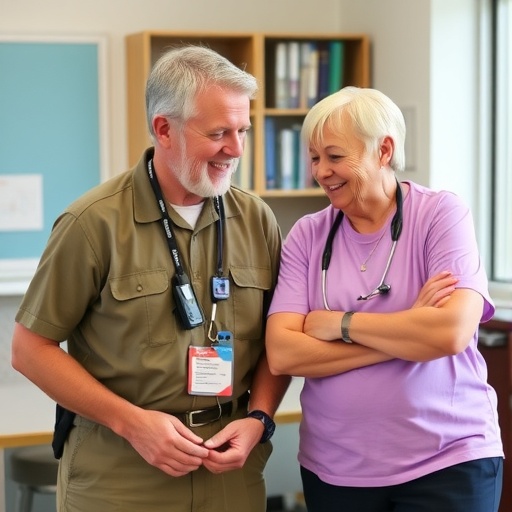Walking presents many challenges for patients with Parkinson's disease. Among the most burdensome of these challenges is "freezing of gait," the sudden onset of immobility mid-step. It often causes falls and leads to a reduction in quality of life.
A new Tel Aviv University study suggests a novel way of treating the affected areas of the brain that apparently cause freezing of gait. It proposes that transcranial direct-current electrical stimulation of the primary motor cortex and the left dorsolateral prefrontal cortex significantly ameliorates the condition.
"The effects of multi-target simultaneous stimulation of motor and cognitive networks demand investigation," says Prof. Jeffrey Hausdorff of TAU's Sackler School of Medicine and the Center for Movement Disorders at Tel Aviv Medical Center, who led the research for the study, just published in the journal Movement Disorders.
Research for the study was also conducted by TAU neuroscience doctoral student Moria Dagan; Prof. Nir Giladi of TAU's Sackler School of Medicine and Tel Aviv Medical Center; Dr. Tali Herman of Tel Aviv Medical Center; and a team of researchers from Harvard Medical School led by Dr. Brad Manor and Prof. Lew Lipsitz.
Real and "sham" stimulation examined
The team of scientists examined 20 Parkinson's disease patients, who often experience freezing of gait. The patients received 20 minutes of transcranial direct current stimulation via a cap that the subjects wore on their head on three separate visits. Transcranial direct current stimulation targeted the primary motor cortex and left dorsolateral prefrontal cortex simultaneously; the primary motor cortex only; or underwent "sham," placebo stimulation, where the subject feels some tingling sensation, but the amount of stimulation is negligible.
Before and after each round of stimulation, the participants completed a test that provoked freezing of gait, a static and dynamic mobility test (known as "Timed Up and Go"), gait assessment, and a cognitive test for processing speed, selective attention and inhibition control (Stroop test).
"What we found was quite encouraging," says Prof. Hausdorff. "The participants' walking improved after simultaneous stimulation of the primary motor cortex and left dorsolateral prefrontal cortex, but not after primary motor cortex only or sham stimulation. The results of the study reveal that transcranial direct current stimulation designed to simultaneously target motor and cognitive regions apparently induces immediate aftereffects in the brain that translate into reduced freezing of gait and improvements in executive function and mobility."
Multi-site stimulation most effective
After 20 minutes of multi-site stimulation, the patients' freezing of gait was reduced and mobility and cognition improved — more than that seen after stimulation of primary motor cortex only or through sham simulation.
"In other words, a larger, more positive effect is obtained when both motor and cognitive areas are targeted," Prof. Hausdorff concludes. "When thinking about treatments for freezing of gait, it is important to target both motor and cognitive functions.
"Even among patients with advanced Parkinson's disease and freezing of gait, it is apparently possible to improve brain function via non-invasive brain stimulation, at least in the short-term, and this has positive, functional consequences."
Together with their collaborators at Harvard Medical School, the TAU-TAMC team is currently conducting a randomized controlled trial to determine the long-term benefits of this multi-site stimulation on freezing of gait and related symptoms.
###
American Friends of Tel Aviv University (AFTAU) supports Israel's most influential, comprehensive and sought-after center of higher learning, Tel Aviv University (TAU). TAU is recognized and celebrated internationally for creating an innovative, entrepreneurial culture on campus that generates inventions, startups and economic development in Israel. For three years in a row, TAU ranked 9th in the world, and first in Israel, for alumni going on to become successful entrepreneurs backed by significant venture capital, a ranking that surpassed several Ivy League universities. To date, 2,400 patents have been filed out of the University, making TAU 29th in the world for patents among academic institutions.
Media Contact
George Hunka
[email protected]
212-742-9070
@AFTAUnews
https://www.aftau.org/weblog-medicine–health?&storyid4704=2383&ncs4704=3
Related Journal Article
http://dx.doi.org/10.1002/mds.27300




